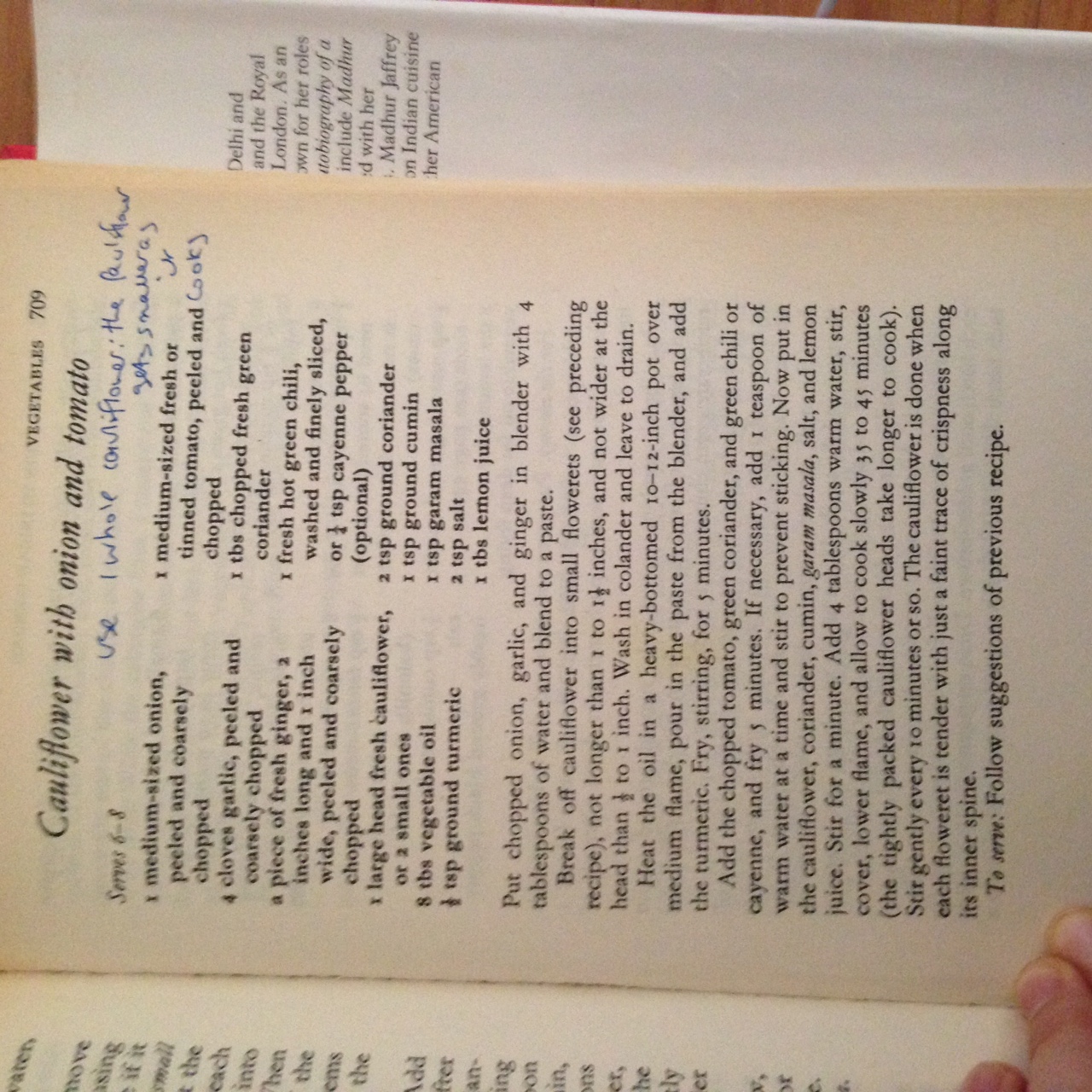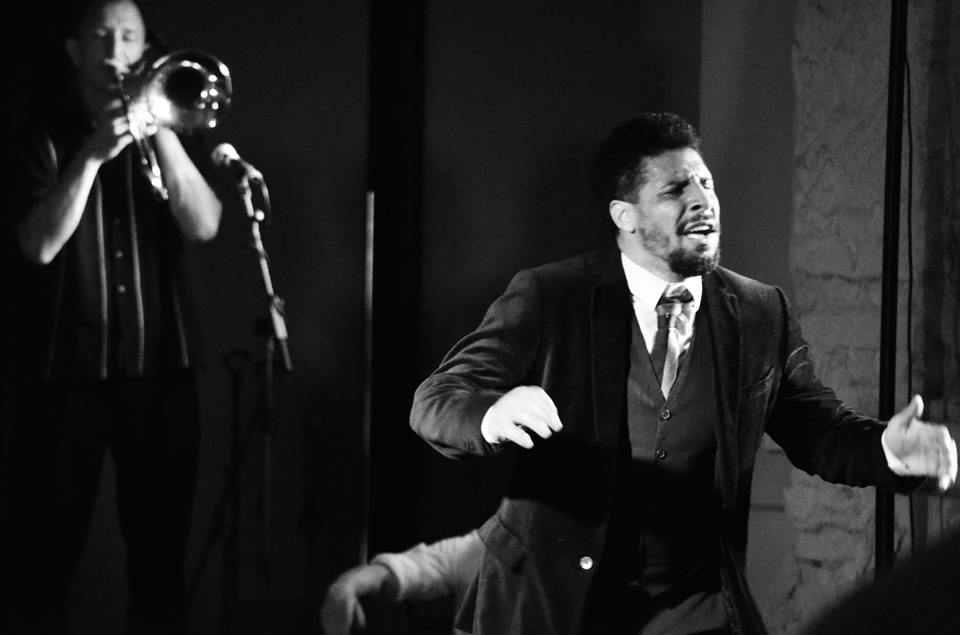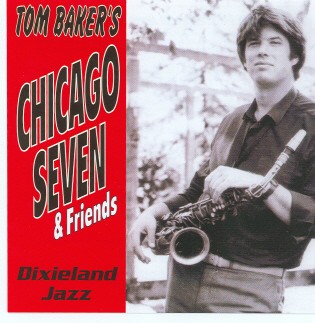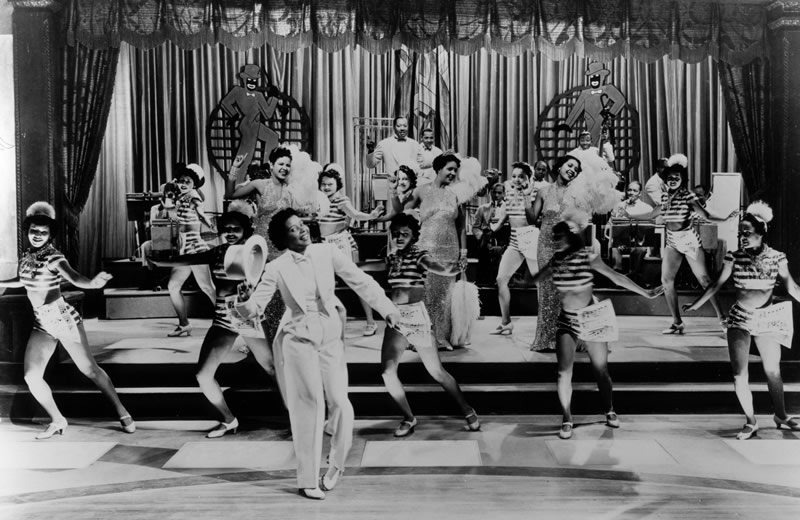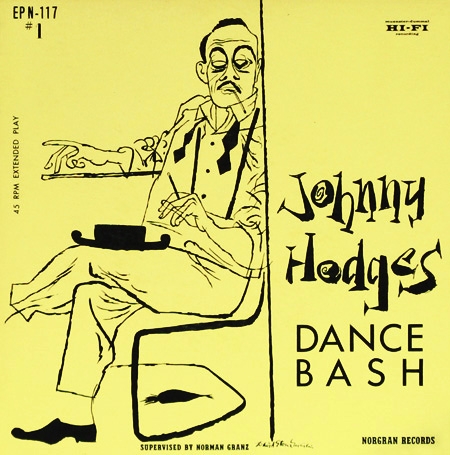Ok, so here’s a sample approach to running a lindy hop event in Sydney. It has a bit of planning involved, but I’ve found you do need some plans. If you play the whole thing by ear, you will screw someone over.
This is a long post. Every now and then someone comments that they find my posts too long. To them I say: sucks to be you, bro.
Budget
You need to keep track of your spending. Even if you’re not legit, and are just treating this like a private party, you will need to be sure you have enough money in your bank account to pay the bills. Even if it’s a little dance.
So what’s in your budget? Everything. I put everything in it. Because it’s things like petrol to drive a sound system to a gig that get left out, when they’re actually a fairly big expense. Put everything in your budget. I usually do an ‘estimated income/expense’ budget, and then fill in the ‘actual income/expense’ parts as they’re finalised.
Here’s a draft budget for a little DJed gig in a venue with a sound system in-house already.
Expenses:
- Venue hire: $150 (5 hours @ $30 per hour) -> make sure you include bump in and bump out time, usually an extra two hours. So for a 3 hour event, you’re paying for 5 hours venue hire.
- Venue hire bond/deposit: $0 (you’ll get this back after the gig, but you still need the cash up front for a lot of venues, especially council or church or big corporate venues).
- Cash Float: $140 (for a smaller event, $200 for a bigger one) -> in $5 notes (that’s important). You get this back, but you need the cash up front.
- DJ pay: $75 (3 hours @ $25 per hour).
- DJ rider: $20 (soft drink or chips or whatevs) -> you don’t have to do this, but I’ve found it’s a very cheap way to make your DJs happy.
- Stationary and extras: $50 (envelopes to put pay in, cash box, paper for printing out signs, dodgy hand flyers, and running sheets, clean up kit, etc)
[NB: I have also started adding in the cost of public transport or Goget hire for my event management. That’s an added cost for me (especially car hire), and I need to count that in there, as transport is an ESSENTIAL part of any event. Same goes for including petrol and parking. I use Goget rather than cabs, because they are less stress, and are actually free after midnight.]
=> That’s $435 right there. Which is ridiculously cheap for a dance event.
So you will need 44 people paying $10 each to break even. I’d allow 50, because shit happens. That’s if you’re not paying tax or being legit. This is totally achievable in Sydney. I actually like to aim higher, so I have a little cushion, and perhaps a bit of profit to make into a nest egg, or heck, to just cover your time. If you’re lucky. I find my smallest mid-week events are usually about 60 people. My larger independent weekend events pull about 90-100. And the bigger events I ran for my previous employer, with the promotional pull of a big dance school, can sit on about 140.
That’s all here in Sydney, with a competitive live music and events scene. Other cities run huger events. But remember: 20 people is a party. That’s good shit. You don’t need to be huge to be successful. I’ve run bigger events in Melbourne that pull in hundreds of people. I don’t actually like it so much – my latest plan is for a mini-event in a mini-venue. Fun!
Ask yourself: is your venue big enough for 50 people? 90? 140? Can you afford a larger one? How will you handle too many people arriving? I’ve actually had that problem: it’s exciting to have hundreds of people turn up, but it’s not safe to mash them into a tiny venue. And they will only remember having a shitty, crowded, hot time.
Some people run their events assuming they’ll make enough money on the night to cover their costs, so they don’t bring any extra cash. I don’t do this. I always bring enough cash to cover my expenses, just in case. So I have a little envelope with the DJ pay all divided up and ready to go. And I think about how to protect my cash against theft. Because shit happens. I also make sure it’s all in useful denominations – $5 notes for the float, etc etc. I usually try to divide it up ahead of time, because it’s really hard to count cash in a dark, loud, sweaty room full of dancers at 3am when you are totally exhausted.
Important: pay everyone promptly, and correctly. Do NOT wait for them to ask you for cash. Don’t be a dick.
Items:
aka ‘stuff you need’
- Door kit (desk lamp; cash box or pencil case or something to put the cash in; mints and a bowl for them; door sheet to keep a tally of the number of punters arriving (I usually divide it up by door shifts, so I have an idea of when most people arrived, and when we were most likely to have door cash count problems); cash count sheet (so you can count all the money quickly on the night, then do a second count a day or two later when you’re recovered – put it all on one piece of paper); door list to record all the comps getting in for free; sign with the event price on it; a copy of the running sheet for you, for the DJ, for the door; pens, pencils, sticky tape, gaffa tape (the real stuff), scissors, blue tac; a sign up sheet for your email list; hand sanitiser); your emergency plan.
- Clean up kit (roll of strong garbage bags (don’t use cheapies, they’ll make you cry), chux cloths).
- Toilet paper. Trust me – you will be glad you have it.
- Sound gear (RCA cable to connect laptops to the sound gear – always bring your own), power board, extension cord, small torch (yes, this is important), adaptor plugs for the RCA cable.
- Desk lamp, for the DJ or the door desk. Better to have than not have.
- Plastic cups, bottle opener, chocolates, bottles of water for you and the DJ, your own drinks/snacks, especially if you are doing BYO drinks.
- First aid kit. If you’re doing this a few times, buy one. At least buy some ice packs – good for injuries, heat distress, etc etc. I buy mine from the St John’s Ambulance people because they are a good cause, and their products are the best quality. Don’t scimp on first aid gear.
-> all this can cost about $50, maximum $100. But once you have all this junk, you’re covered for the future events.
Special note: Don’t get the cheap gaffa tape. I’m SERIOUS. The cheap stuff is impossible to clean off, and yet it doesn’t stick properly. Use good gaffa to do things like tape down trailing cables, stick fabric to mirrors (extra important in a dance studio venue). And then it comes off easily, and doesn’t make a mess. It’s also easier to tear.
Running sheet:
Make one. DO IT. And start it well before the weekend. And put EVERYTHING in it. I’ve been at events that don’t include everything in their running sheets, and it’s total bullshit.
Things to include:
– Venue hire confirmation.
I’ve been involved in approximately one million dance events where the organiser hasn’t confirmed the venue, and we’ve turned up to a locked or double booked space. I usually ring and inquire and leave my details and name, then I make the booking, then I ring and email to confirm (this is when I usually ring to ask about key collection – about a couple of weeks or a month out), then I ring and email to confirm again the day before the gig. This last one is when I double check key collections or organise a key collection time.
A note: if a venue organiser gives you a sad story about being double booked, implying that they’d like you to change your booking, don’t do it. Be properly sympathetic and understanding, but don’t let them push you into changing your date. It will be a massive pain for you, and it’s important to learn to be strong when dealing with venue managers, bands, sound guys, etc etc. You are the boss of this gig. I find that older men try this on me quite regularly. So I just put on my no bullshit, polite but capable voice and body language whenever I deal with people.
Sadly, the cheaper end of the venue hire scale (where we lindy hoppers tend to live) is where the dodgiest venue mangers also live. Learn to smell their bullshit a mile off. Follow your instincts – if you feel like they’re dodgy, they probably are. Run away.
– Event start and finish times
– Bump in start and finish times, bump out start and finish times
– All the specific details for the bump in and bump out.
List exactly what has to happen. DJ set up. Door set up. Rubbish pick up. Toilet tidy. etc etc. You’re less likely to forget something important this way.
– Door set up and tidy up times (the door close time is often before the end of the event).
– Sound gear set up start time (be detailed).
– Leaving home to travel to the venue time.
– Time to arrive home after the event – if it’s 4am, will you make that 8am key return time?
– When to collect the venue key (even if it’s the day before)
– When to return the key (especially if it’s the day after – will you be up at 8am to return a church hall key?)
– Any gear collection/delivery times.
Getting sound gear delivered? When will it arrive? Allow extra time for fuck ups and late delivery. Do you need to collect anything on the day? Bag of ice? DJ? Lights? Slab of beer? Add that into your running sheet. This one is REALLY important, and something most people forget.
– Volunteer shifts: start and finish times, who does what, etc.
Include door shifts, bump in, and bump out times. This one is IMPORTANT. Don’t play it by ear. Roster your volunteers into spots that suit their skills and preferences. Are they great with people? Put them on the door. Are they fantastically organised? Get them to handle the first door shift. Are they rubbish with people, but very diligent and responsible? Put them on tidy up.
– DJ shifts.
Which DJ is DJing when? Don’t do this randomly – they’ll have set preferences, and will be best suited to some shifts. If they’re a crazy hardcore fast DJ, don’t put them on first. If they’re good at blues and lindy, maybe put them later in the night so they can do both. If they’re great at making dancers feel relaxed and comfortable, put them on first, so they can warm up the crowd.
Circulate this information well ahead of time.
– Cash drop times.
If you make heaps of cash, do you have a time set for when you’ll collect that extra cash and squirrel it away safely?
– Door close.
When will you close the door? Set aside time to do a quick cash count and door tally. It probably won’t be accurate, but it’ll give you one extra layer of accountability.
– Performances.
Allow 5 minutes for every 3 minute performance. It takes time to do announcements, applauding, getting performers on and off stage.
– Comps.
Even a jack and jill needs to be slotted into a running sheet. If you are running a comp, even a little one, you’ll need a whole other running sheet and plan for that. If you do this stuff, keep it short and sweet.
– Any snowballs or welcome dances or birthday dances or any of that stuff. Most DJs can just pull a song out of their bum, but newer DJs can’t.
– Any important announcements.
If there’s an after-party, announce it at a set time, and put that in the running sheet, so you won’t forget. Welcome people to your party at about half an hour in, or an hour in. That way people will know who you are, and they’ll feel welcome. MCs are actually great for helping a party flow. But keep your speeches short, light hearted, and friendly. DJs can do this, but that’s not their job – it’s an MC’s job.
– Introducing and back announcing DJs.
Put it in your running sheet, so you won’t forget.
-> I recommend putting these things between DJ sets, so you don’t mess up a DJ’s flow.
Emergency plan:
This is my latest addition to my door kit. It is very very important. It’s like a birth plan when you go to have a baby – you won’t be in a good position to make good decisions when it happens, so plan ahead.
I include:
Promotion:
This is a tricky one, and depends on what you want to achieve with your event. Decide ahead of time: do you want millions of people? Do you want just a few people? What is your ‘vision’ for your event? Are you planning a solid old school scratchy hot jazz party with hardcore lindy hop? Is this a late night beer-and-cake party with lots of shouting and a wide ranging style of music? Think carefully – all your PR decisions will be shaped by these ideas.
Things to think about:
- what tone will your PR talk take? Will you be friendly and chatty?
- will you use lots of in-jokes (and alienate peeps who don’t know you)?
- will you be professional and kind of distant?
- will you be talking to new dancers, who need a lot of things explained to them (eg ‘social dancing’, ‘hardcore lindy hop’, ‘hot jazz’, etc etc)
- will you be talking to experienced dancers who travel a lot?
- are you addressing blues dancers, lindy hoppers, balboa dancers?
- How will you contact people?
I like a three-pronged approach: paper flyers (cheap photocopies are actually cool for smaller or more ‘indy’ dance parties), word of mouth (your volunteers talking about their gig, for example, you talking to all sorts of people, your teaching friends mentioning it in class, etc etc), and online. Online is a big one (facebook is most powerful, but twitter, instagram, a designated website, and EMAIL are very powerful too), but face to face is actually your most powerful promotional tool.
- Make a PR plan.
You don’t want so spam all your friends on fb 6 weeks before the event, then go silent for six weeks. Plan it out. Designing, making, printing, and distributing flyers takes time – more time if you have less experience. Are you friends with lots of peeps on facebook? Do you have good relationships with teachers in your scene? Do you have access to an email newsletter?
- Only tell people useful information.
Don’t just randomly spam them on facebook with useless shit. They want to know: when it is (so perhaps a post about why Saturday the X of X month is a great date is important), where it is (a post about the venue itself – use a photo! – is great), what music will be on show (who are the DJs? tell people! use a youtube link to a song that really captures the vibe you want for your event), and what will actually happen at the event (is there a comp? are you byo or selling drinks? Do you want peeps to bring a plate to share? Tell people!)
- Use a friendly, open, yet professional tone.
You can be personable, but don’t tell everyone all your personal information. Be accessible and friendly, but not stalkery and creepy.
- After the weekend:
Follow up on your FB event with a nice note thanking your volunteers, DJs, and other workers by name (ALWAYS do this). Post some photos. Link to other people’s photos. This is PR for your next event. It’s also just a fun thing to do. Part of the fun of lindy hop is remembering past events that were really great.
- Don’t play the martyr card.
Don’t ever beg people to come, cry about having spent a million dollars on food or the venue or whatevs, and don’t shout that no one is buying tickets for your party. Nobody will like that, and it will make them cranky, and they will AVOID your parties. Also that is weird shit – don’t do that.
- Be honest and open, and run events that actually meet people’s needs.
Just because you want a late night blues party with a hip hop DJ dropping phat beats, doesn’t mean other people do. And perhaps someone else is already doing this, but better than you ever could. Know your scene, know what they want. And do not ever try to ‘educate’ or ‘give people what they need’. That’s patronising shit. Stop that.
All this stuff is important, even if you’re just running a small dance in a studio. You have bills to pay ($500 remember), and you want people to come to your party. So find a way to get them interested.
The venue:
- Clean up
It will take longer than you think. Will you be up for it at 4am? Plan it now, because you will be too tired to think straight then.
- Set up.
- It will take longer than you think. Just opening the doors, turning on the lights, and walking about being excited will take 15 minutes. It’ll take 15 minutes to set up the door. And other 15 minutes to set up the DJ table (if all the gear is in place, and ready to go. which it rarely is). If you’re decorating, allow at least an hour.
If you’re doing all that by yourself, it’ll take 1 hour and 45 minutes. If you have volunteers, you’ll still need to explain what to do, and trouble shoot as you go along. Allow AT LEAST one hour bump in time for any event. Longer if you’re decorating.
- Do you actually know how to set up sound gear? If you don’t, you’ll need to organise someone to come in and do it for you. Do NOT just assume the DJ will do it. They are there to DJ, not do tech support.
- Rubbish disposal.
This is a big one. One wheelie bin probably won’t cut it. If that’s all you have, you’ll need to be sneaky and see if you can put rubbish in other properties’ bins. But don’t get caught or fuck shit up for the venue manager.
Does the venue have a skip? Where is it? Can you find it in the dark? When you look at the venue, go and physically touch the bin and see if you can open it – don’t rely on a verbal description from the venue manager. Ask the venue manager: “Are we expected to empty the bins into the skip?” Some venues are ok with you leaving the full garbage bags on-site. Most aren’t. Remember: dancers make a LOT of rubbish. Mostly empty plastic water bottles.
- Lights.
Where are they? Can you turn them off? Could you do it when you’re totally exhausted, at 4am, in the dark?
- Cleanliness:
- Is the venue clean before you start your gig?
We use one great studio that often has quite dirty toilets, so we need to allow time to clean them before the gig. If you’re cleaning toilets, you can’t expect volunteers to do it without checking with them first. Allow time for this. Some volunteers have never actually cleaned a toilet before. inorite.
- General cleaning.
Say to the venue manager – “Will we be expected to clean the venue after use? What does that specifically involve?” If that means vacuuming the whole joint (I’ve had to do that) at 4am, perhaps that is too sucktown for you and your meagre volunteer resources. If you do have to clean extensively, put that time in your running sheet. DO IT NOW.
- Venue manager contact details: get a phone number, and test it then and there. You will need it 5 minutes before the gig starts and you can’t get the front door open.
- Electricity.
Where are the power points? Take a photo. Does the venue have 3phase power?
- Sound gear.
Look at it, test it, try it out, take photos.
- Furniture.
What is there in the venue? Are you allowed to use it? Or move it? You will need a DJ table and chairs, a door table and chairs, and probably something for your punters to sit on during the night. Look at it all in situ, take photos of it, measure it, count it.
- How big is the venue?
Measure it. Take photos of EVERYTHING.
- Toilet paper.
Is there heaps? I usually allow about 5 rolls per cubicle, if there are 6 cubicles for the venue. So allow about 30 rolls. Yes, it’s a lot. But dancers use it for all sorts of stuff besides wiping their bums. Ask the venue: do they supply it, or do you? If it’s on-site, where is it? Physically touch the rolls, so you know it’s not locked in cupboard somewhere.
- Soap.
Bring some.
Once you’re at the venue and the party’s started, there’s more work to do. If you’re running this party, you have to manage this party. That means that you can’t just dance like a fool all night and then suddenly think at 4am “Oh shit, we have to clean up.” When you are running a party, you have to keep part of your mind on the the mechanics of the whole thing.
You need to keep an eye on:
- The DJs.
- Introduce them, thank them individually, pay them promptly.
- If you need to give them feedback, or to get them to change it up during their shift, ask them, specifically: “Hey mate, peeps are looking to dance, but they’re having trouble getting into it. Could you please drop a favourite like ‘Easy Does It’ in there in the next couple of songs?” Don’t give vague advice or vague comments like “Everyone is really tired.” That’s an observation, not actually useful advice.
- Don’t hover. Do not hover. Don’t hover. DJs are working, and unless they give you open body language that says ‘hey, talk to me!’ they won’t want you hovering – just let them do their thing. I find event managers do this quite a bit: they just. can’t. let. go. I personally find it absolutely maddening.
- Don’t kiss DJ arse. Yes, they’re great, but too much sucking up is weird. Say thank you, and tell them “You rock!” when they pull something awesome, but mostly just them do their thing. Don’t micromanage.
- The volunteers.
Have they turned up for their shift? Are things going ok at the door? Have you had a crazy amount of people turn up, leaving your door people with one million dollars in small notes to deal with? Have you thought of a cash drop process to deal with this? Who’ll do it? Where will you keep that money? Have you thanked a volunteer coming off shift? Did you check in with the new shift of door volunteers? Are you being patient and kind during bump out, even though you’re absolutely shagged and kind of grumpy?
- The punters.
You need to keep one eye on the people in the room. You might be having the best time ever, but is everyone else? Are they sitting about talking? Are they dancing like crazy fools? Are they only dancing to the slow songs?
My usual plan: I want people to have a lot of fun. If I’m running a dance, I want them dancing. Sometimes that means crazy fun, sometimes that means calm, gentle fun. I rarely aim for calm, gentle fun, because lindy hop. But a blues event is probably looking for calm, intense fun.
If people are sitting down, why? Is it because they’re tired? Did you notice whether people were dancing the last five songs, and have only just sat down? Or have they been sitting down all night? Is the room too hot? Too cold? Too crowded? What time is it? All these things will help you decide what to do next. If you want them up and dancing, you might have to suggest (politely) to the DJ that they play a favourite – ‘Splanky’ or ‘Easy Doest It’ or whatever songs works as a nice friendly invitation to dance for your scene.
But be prepared to change your ‘plan’ for the party: you might be aiming for crazy fun, but they might want to dance slowly, talk more. You might have wanted old scratchy super hot jazz, but they might be responding to sugergroove at moderate tempos… or getting their funk on with Aretha. You might have wanted calm, quiet chatting and slow dancing, but have ended up with a room full of adrenaline junkies shouting at each other and swinging out like fools.
Go with it.
Managing people:
- Means being able to delegate in a rational way. You need to look at a situation, assess the priorities, and then delegate jobs to deal with each issue. You can’t just do everything yourself. If you plan things ahead of time (eg estimate that it will take one hour to hang decorations), you’ll be able to put volunteers to work in a sensible way.
- My rule: be polite to all people at all times. If you are cranky, take a time out. Be nice. Smile. Laugh. Problems are interesting challenges, not fucking terrible tragedies. Thank people. Don’t get all up in their grills hassling them and micromanaging them, though – let people be competent, trust them and delegate. Take responsibility for dramas or problems: the buck stops with YOU, so step up and take responsibility. Tell volunteers to handball difficult punters to you immediately. Be a manager, not a pain in the arse.
- btw, if you are managing an event, you can’t DJ. It’s just the way things are. You probably shouldn’t teach or perform, either. Who’ll trouble shoot while you’re showing off?
MOST IMPORTANTLY:
Respect your volunteers and DJs. You can’t actually do this without them. They are actually more important than you are. Be polite at all times. Listen to them. Don’t micromanage, but don’t just assume they know what to do all the time. Explain clearly and simply what you want from them. Listen to their suggestions, and take them on board.
Volunteers are the people who help you promote your event. Just by telling their mates that they’re volunteering, they’re telling them that they think this event is important and good enough to be a part of. So make them happy bearers of good news, not shitty people with a gripe to share.
Also: just be a decent person, ok? Get over your issues, your insecurities, and just BE NICE.
And finally, enjoy this. Enjoy the real-time challenges and pressures. Enjoy the excitement. Enjoy the problems! Enjoy working with people. Be flexible, and able to amend your plans on the fly. Take suggestions and advice. You could be wrong – how exciting! New ideas that you don’t have to come up with!
I know a lot of people reading this will be all “Oh, that’s overkill. Chill out, man!” especially if they’re thinking about a smaller event.
You don’t have to do this sort of stuff. But I do. Because I’ve been doing this for fourteen years now, and I find that it’s when things aren’t planned out properly that people get screwed over. Me or other people. And it’s really stressful.
I’ve found that developing these sorts of processes with smaller events helps you prepare for running larger events. A large exchange, for example, is like running 6 or 7 huge parties in one weekend. Except you’re getting progressively tireder and physically trashed. So your plans are even more important.
If you have comprehensive plans, you can hand over your event to someone else. We developed this approach in the early days of the Melbourne Jazz Dance Association running the Melbourne Lindy Exchange. We were all volunteers, so we needed to be able to drop everything with no notice if our day jobs got intense, our families needed us, or our health failed. So we developed a good way of documenting our planning, and then sharing our planning. These days I use google docs to share documents: version control is gold. I use it even for little parties, so I can circulate DJ rosters, keep track of budgets, and so on.
And if you do document your plans, you can develop templates for future events. I tend to reuse running sheets, because the basic structure of a dance event doesn’t actually change very much – we still have to bump in and out, roster DJs and bands and volunteers. Same goes for budgets: complete budgets help you remember what to pay for, but they also help you remember what to actually buy in the first place. I often annotate budgets with notes about where I bought cheap beer, whether they delivered, etc etc etc. And running sheets with contact details for venue managers, DJs, and so on are just gold for subsequent event planning.
I think that planning out an event ahead of time can also help you decide whether this is something you want to do. It’s quite a lot of work the first few times, because you don’t have the time management skills, the patience and the people management skills. So it helps to see just what you’re getting yourself in to before you actually put down the cash and do the PR.
I think that your sense of scale also changes after you’ve done a lot of events. I now think of a ‘small’ band night like our Swinging at the PBC gigs with international and interstate bands as relatively small and simple projects. My idea of ‘big’ these days is a five day weekend event with half a dozen bands, international teachers, heaps of venues, stacks of volunteers and DJs. But if this your first time, a DJed party at your house might be ‘big’.
I’ve also found that the hugest events mean that you can’t give lots of attention to the tiniest things – being a proper host and welcoming or farewelling people as they arrive or leave the party. Making cute paper invitations. Planning a birthday jam for a friend. So a ‘small’ event can actually be quite detailed, and really much nicer… can you see why I’m moving away from larger events these days?
I think that a well-planned smaller, local event is much more important to a local scene than a huge exchange. It’s the everyday, cheaper, accessible local stuff that skills dancers up to run events, to social dance, and to be part of a socially sustainable community. So they are much more important. They also run on smaller budgets, at greater personal financial risk, make smaller profits, and are kind of relentless in the way they demand labour and time over and over again, from relatively inexperienced folk. But this is where we learn to DJ, we learn to be social dancers (not just social dancing, but being dancers in a social space), we learn to work with bands, we learn to create professional networks and relationships. So it’s worth putting time and care into them.

